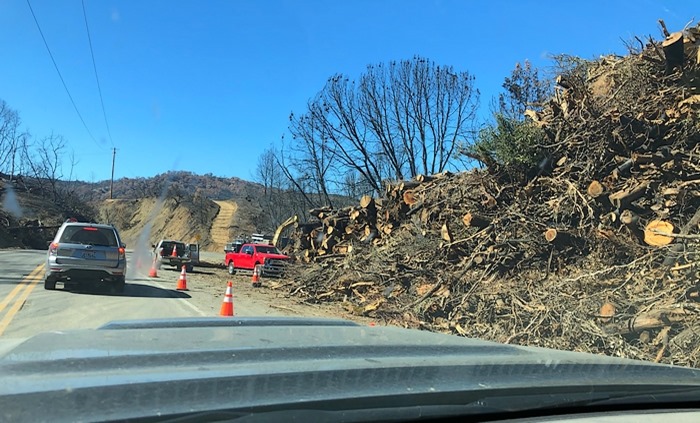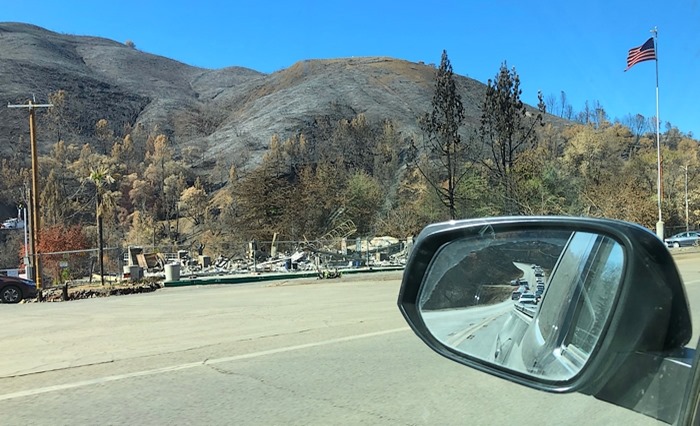It’s been a month since the LNU Lightning Complex fire was contained around Lake Berryessa, and with no change in the status on the Bureau of Reclamation’s website, I took a run up there to eyeball what had burned and determine if the webmaster was simply lazy – or whether the infrastructure impacts were as bad as expected.
While I hoped for the former, it appears to be the latter ..

The above picture (taken between the dam and Markley Cove) shows how the fire burnt down to the water’s edge and apparently burned hot enough to wipe the area of most of the vegetation.
The upper slopes of the lake faired even worse, as the surrounding hillsides were much drier and burnt much more completely, leaving their slopes completely featureless. The below picture shows the mountains above the Markley / Pleasure Cove area.
Roads in the area of the dam are choked with debris due to an aggressive hazard mitigation effort. Charred Oak trees and Digger Pine are perched precariously on the steep slopes above the highway and crews are removing the worst of the trees by skidding them down the hillside into waiting trucks or stacking them into the available parking turnouts.

Because of the narrow roads and large equipment both flag men and delays are commonplace. Logging and the heavy equipment associated with handling the debris have reduced the road to a single lane of traffic metered by guide vehicles and punctuated by numerous stops.
The Markley Cove store is no more. The marina and launch facilities appear intact, as do the numerous pleasure craft moored to the floating docks, but boat launches are forbidden and the area closed.

Above is all that remains of the Markley Cove store. Access to the launch ramps are currently blocked by security (due to a combination of the bureau’s closure of the lake and the need to protect the remaining property from gawkers and looting).
What’s apparent is the appalling amount of lifeless dirt and rock that’s exposed to the elements and the potential for erosion once the rains start. As the entire lake was surrounded by the LNU Lightning Complex, and it burned to the water’s edge in so many places, there’s little chance that significant mitigation can be completed in time for Winter. Spring runoff will deliver a big slug of sediment into the lake and its tributaries, and it’s likely we’ll see numerous road closures due to unstable banks and periodic mud slides .
Putah Creek is liable to suffer a similar fate.
Putah Creek drains Berryessa, and being the closest bonafide trout stream to San Francisco, commands frequent visitors and much vehicle traffic. While the Putah Creek campground and resort facility were spared, much of the drainage below the campground was burned severely. The fire charred the banks of the wide portion of Putah (dubbed Lake Solano), and the area between it and the resort was burned worse than I’ve seen it in past fire seasons. I would expect sediment issues in the creek itself as the far bank and its vegetation was largely obliterated.
In short, stay away.
Until the roadways are restored driving anywhere near the lake is a steady dose of idling waiting for a pilot car, or threading your way between a chipper/shredder and a parked logging truck. I’d guess the stretches with trees will be cleared rather quickly, and the areas with destroyed structures will remain problematic as they attempt to dig out what remains and the truck traffic associated with the debris removal will remain high for the foreseeable future.

